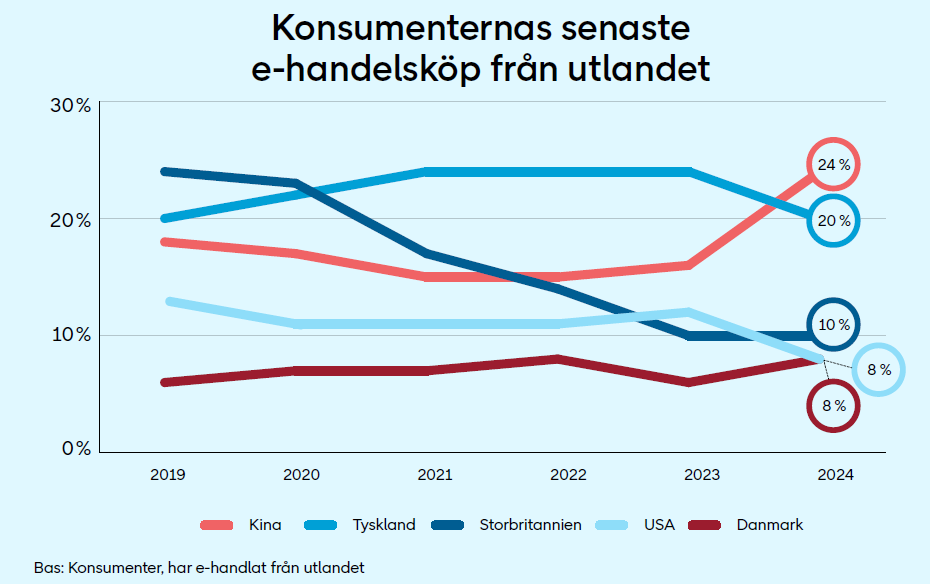
There is still a big difference between different industries facing different challenges. Roughly as much as the pharmacy industry is increasing (14%) compared to the same quarter in 2023, the construction trade is declining (-15%). In total during Q1, e-commerce in Sweden increases by 1%. On a positive note, the grocery trade for the first time in many quarters shows positive growth of 4% according to PostNord and HUI's report E-barometern Q1 2024.
Sustainability
In the section on sustainability there is information about packaging, which is a focus area for many retailers. There are several different innovative solutions and strategies that can help reduce the climate footprint. I myself noted on Amazon that you could now opt out of the Amazon box and instead have the package delivered directly in the supplier's delivery packaging. A simple choice to be able to opt out of additional packaging when there is no need for it.
PostNord's head of sustainability, Naznoush Habashian, shares his insights regarding the new EU directives which, among other things, relate to the reduction of packaging materials, the right to repair and review of value and supplier chains that will come into force in 2025-2030.
- E-commerce companies must be diligent so that they can demonstrate that their environmental claims are accurate. The EU's Green claims are to protect consumers from misleading environmental marketing, greenwashing.
- The EU's PPWR (Packaging and Packaging Waste Regulation) must reduce packaging waste and increase reuse and recycle packaging materials. E-retailers need to review their packaging strategies and innovate and invest. There are many successful initiatives where it becomes clear that the entire chain must start working together in order to make an impact. Is a certain packaging necessary? Can it be in a different size or material? How can it be reused?
- Companies need to engage and train employees in sustainability issues and adapt their business models to increase recycling and reuse of products.
International e-commerce
China now has the largest share of recent foreign e-commerce purchases. It is the first time in five years that a country outside of Europe is at the top among Swedish e-commerce consumers when shopping outside of Sweden.
While consumers' main reason for e-shopping from China is lower prices, those who e-shop from the US and the UK state that the main reason for e-shopping from there is that the goods were not available on Swedish sites.
From Denmark, unlike the other top countries, it is not most common to order clothes and shoes, but instead home electronics. Germany stands out in that products from the automotive industry are already in second place among favourite goods to order.

Circular models – part of the e-commerce of the future
When talking about circular business models in e-commerce, it can be any offer that extends the life of the goods. It can be to repair, rent or buy and sell second hand. It is becoming increasingly common for merchants to add circular services to their own offering. More than half of consumers use circular services online today, where it is most common to buy used. The most common product group to buy more second hand due to the economic situation is clothes and shoes.
Only 3% state that they bought second hand from a traditional company. Many consumers are used to shopping and selling via various C2C services and there are some logistical challenges for companies before it can be offered on a large scale.
When it comes to e-commerce rentals, there is untapped potential, with only 2% stating that they use online rental services. A majority think it is worth the price, especially the products that are only used sporadically.
It will be important to choose the focus area within circular trade that suits you. Some of the products that are good for buying and selling second hand are not always as good for renting out or in some cases repairing. According to a 2022 report by McKinsey & Co, they estimate that there could be several hundred billion euros in the European circular market in the future.
